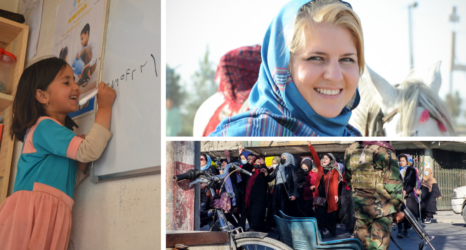“A man got on the train and sat next to me even though there were plenty of other seats available. Once on the way to Hornsby (thus no station stops to exit at) the man started touch himself. It was disgusting. I got up and left immediately. I went and sat next to the biggest male stranger I could find.” — an experience reported by a woman in Sydney, 2018
Urban landscapes are spaces imbued with power dynamics. While cities often appear gender neutral in at ground level, they have long been permeated by patriarchy in both subtle and explicit ways. Most urban spaces facilitate the movement and engagement of some citizens more than others—namely, able-bodied, white, professional men, to the detriment of women, people of color, the elderly, children and disabled individuals.
Historically, the city was planned and shaped according to the premise that a woman’s place was in the home. A city for men manifests in design that has become so commonplace it is normal: stairs as the predominant method of connecting areas of different levels, poorly lit parks, residences that isolate mothers from each other and public amenities, hectic inner-city roads that repel pedestrians. Cities designed by men, for men, also contribute to deeply disturbing outcomes: in Sao Paulo, one in three women over the age of 16 has experienced physical, sexual or psychological violence; in New Delhi, women are deterred from using public transport because of the threat of rape.
The conversation about female-friendly cities is already underway, first spurred into existence by Dolores Hayden’s 1980 essay “What Would a Non-Sexist City Be Like?” Urban planning has traditionally long overlooked the needs of those who take care of children, the elderly and the household—which, in most cities, is still women. Female-friendly cities are those where women’s perspectives and needs inform the planning and design process.
Urban planners are now beginning to ascribe to design principles informed by universal design—which places emphasis on diversity, inclusiveness and equality. Vienna is at the forefront of this movement, promoting what is referred to as the creation of the “fair-shared city.” The consultation process in Vienna revealed the distinctive ways in which women use the city compared to men. There was a rise in apartment complexes with good public transport connectivity, kindergartens, doctors’ offices and ample green spaces where mothers could socialize and share child-watching responsibilities.Women were more likely to have a fragmented day characterized by short trips and varied patterns of movement as they bought groceries, went to work, delivered children to school and also picked them up; wider sidewalks and ramps installed next to staircases at major intersections enhanced the mobility of women with strollers as well as people in walkers or wheelchairs.
Improved public transport and ease of movement is critical to women. Janette Sadik-Khan, former transport commissioner of New York permanently altered the landscape of New York by overseeing the rollout of more than 400 miles of cycleways and rapid bus routes and reclaiming space once used by cars into pedestrianized plazas. These developments benefit not only women, but everyone. More people began walking and cycling. Kids were playing in parks. People were utilizing shared public spaces in innovative and creative ways—dancing or playing basketball.
In other cities, amendments as simple as the inclusion of additional street lights in dark corners can literally have life-changing effects, empowering women to feel liberated to move with the same confidence as their male counterparts. In India, where four women are raped every hour, well-illuminated streets represent one cost-effective method of addressing sexual violence.
Women are also staking a claim on their right to feel safe and comfortable in their cities at a grassroots level—and are helping in the process of transformation. A Melbourne app called Free to Be that has since been rolled out in Sydney, Lima, Delhi, Madrid and Kampala uses crowd-mapping to enable women to identify and share public spaces that make them feel uneasy or scared, but also happy and safe. The app geographically enables identification of “bad spots” where urban design change needs to happen. Women share their experience of the space and why they feel that way, offering compelling firsthand insights into what limits their movement and what promotes it.
“Badly lit road that feels very unsafe at night,” one woman wrote of a bad spot near Surrey St in central Sydney. “My friend and I were chased along here by two men. We ran into a random house and banged on their door. Thank god the owner was there and came out to wait with us until the police arrived.”
“As a teenage girl,” another wrote of a good spot, “this place feels very safe to be at all times of the night as it is well lit and there are always people around if you need any help, as well as a police station.”
Ultimately, urban design that excludes or endangers women must be challenged and revised. Diverse studies tell us that the future is urban. A projected 66 percent of the world’s population will be living in cities by 2050, with megacities in excess of 10 million people rising to 41 by 2030. With cities rapidly expanding and changing, opportunities abound to reflect specifically about how we can change the fabric of our cities so diverse people can co-exist with equal ability to enjoy the unique social, economic, cultural and political benefits that come from inhabiting urban landscapes.





